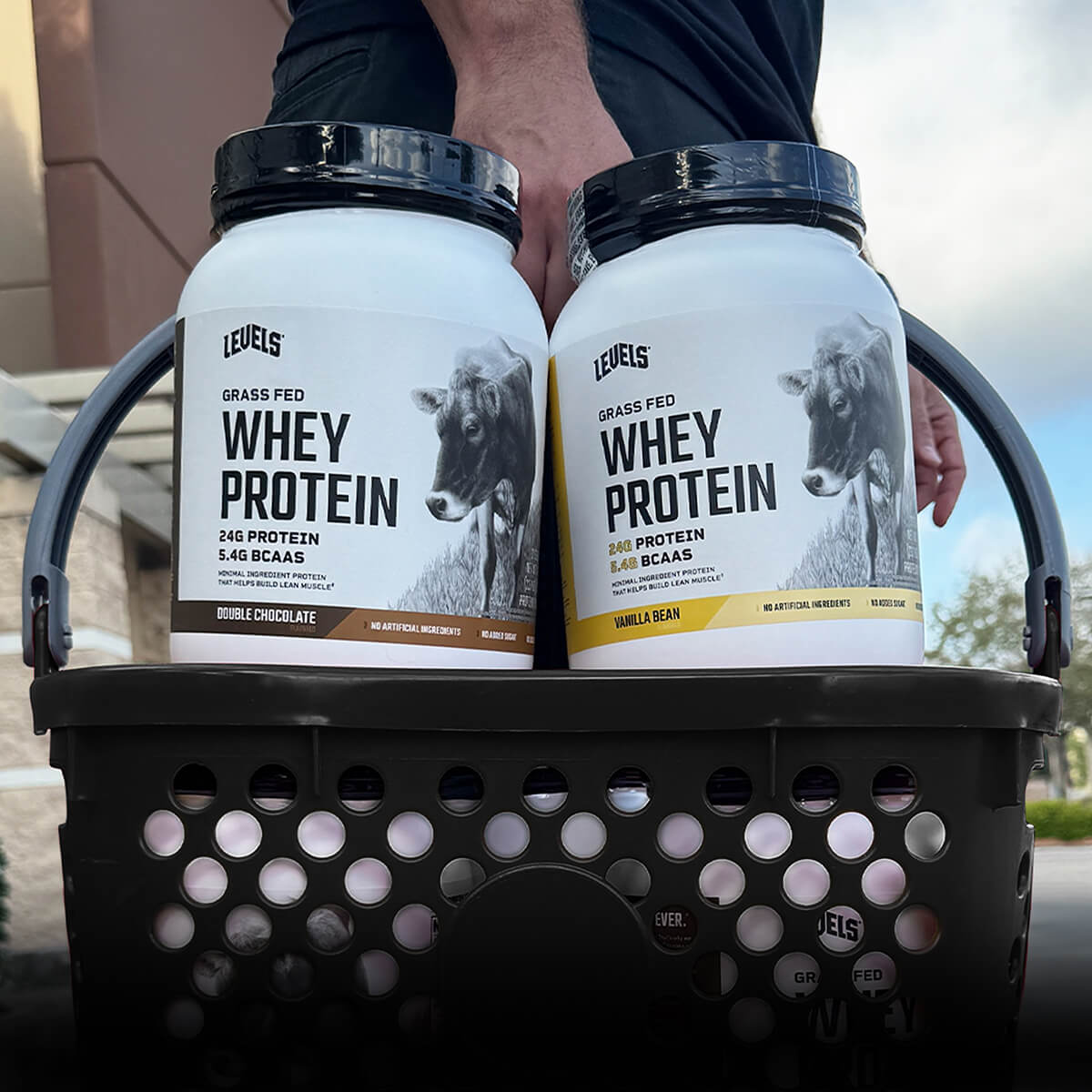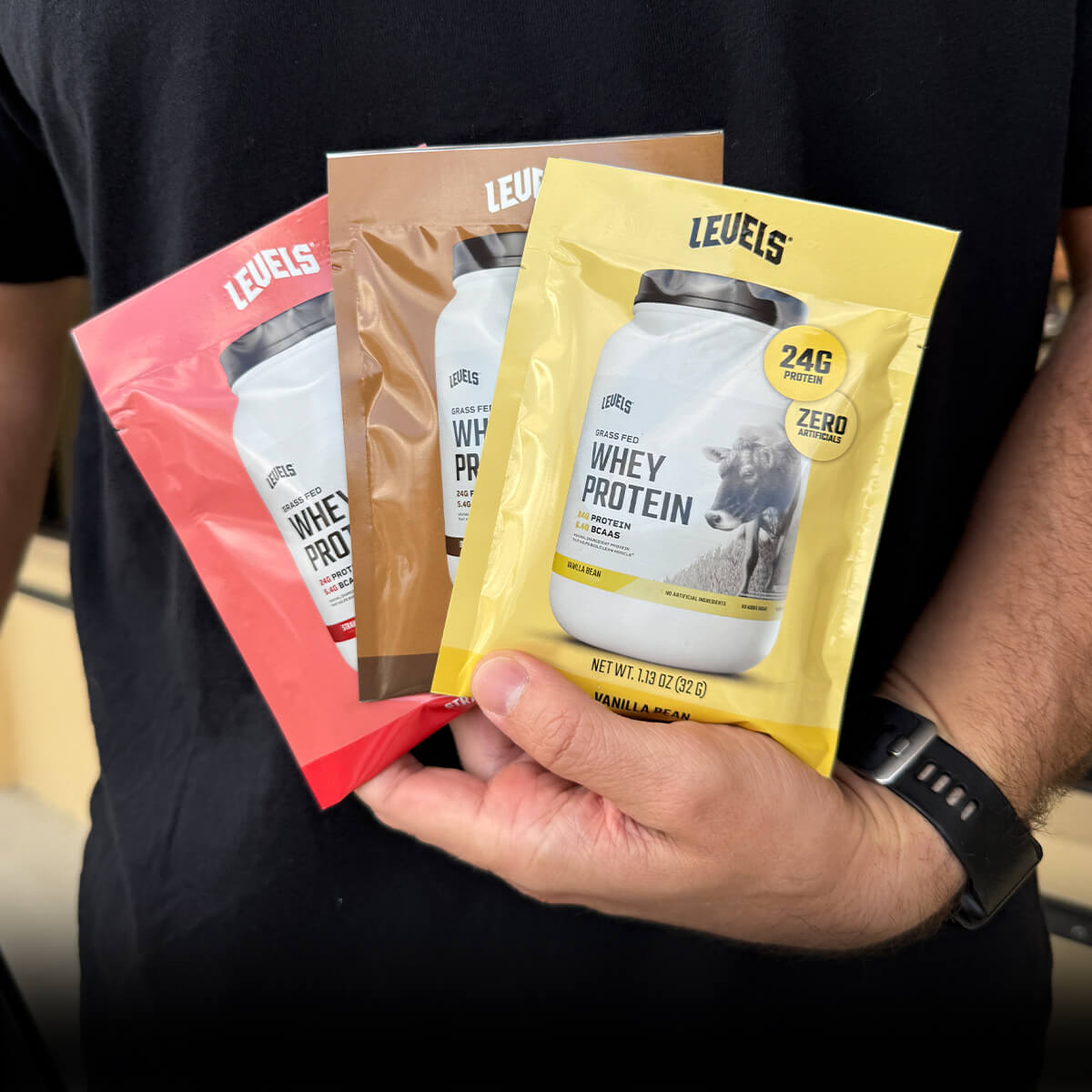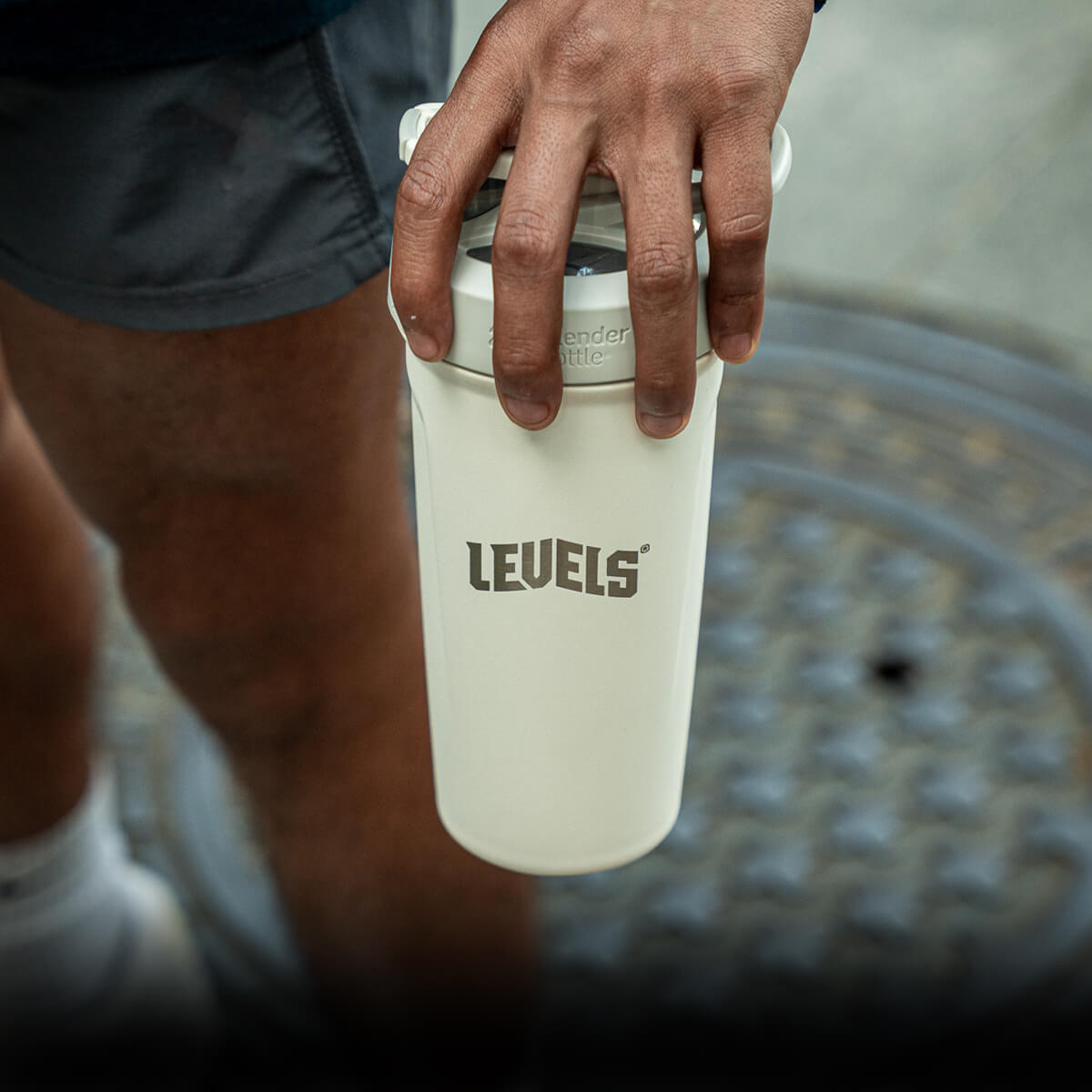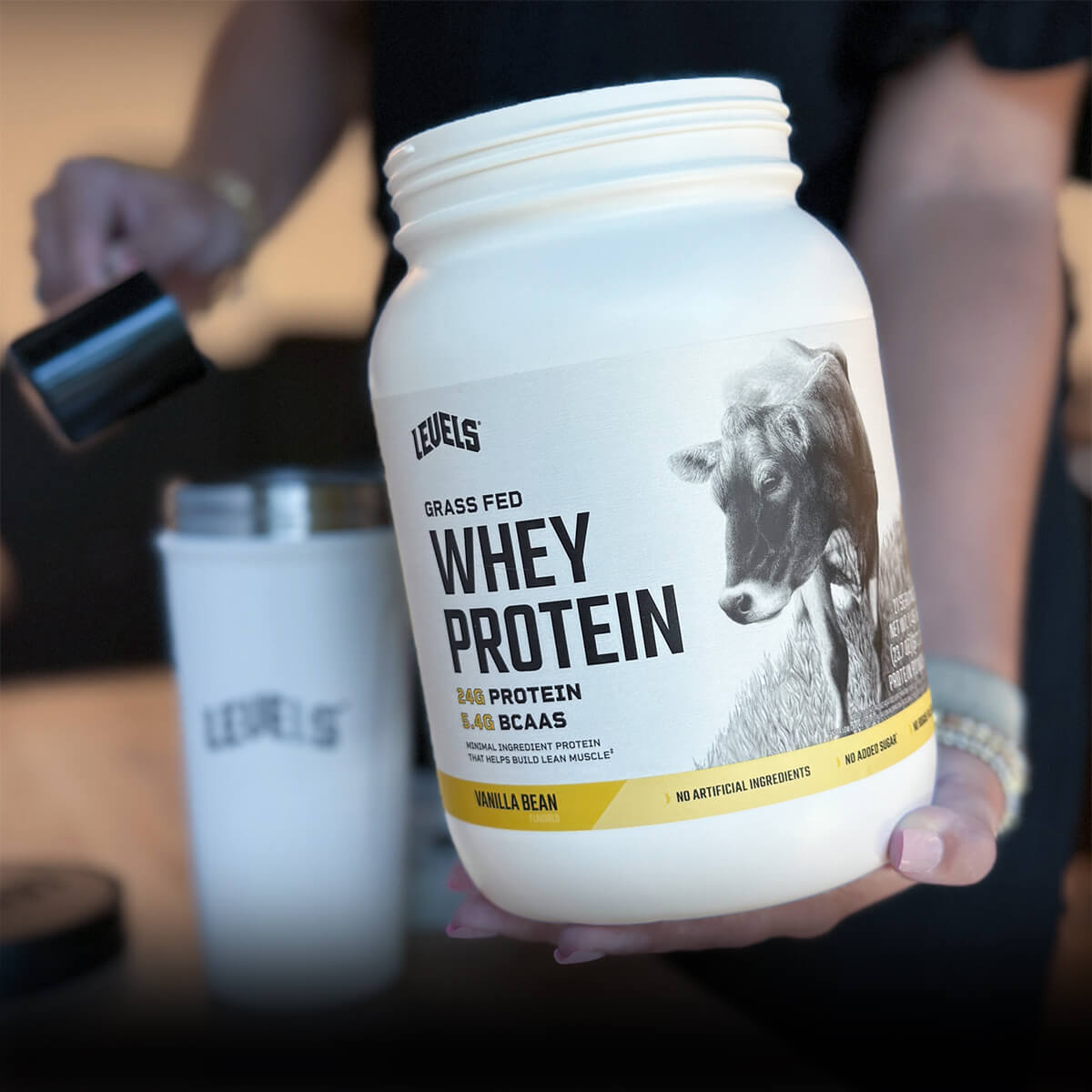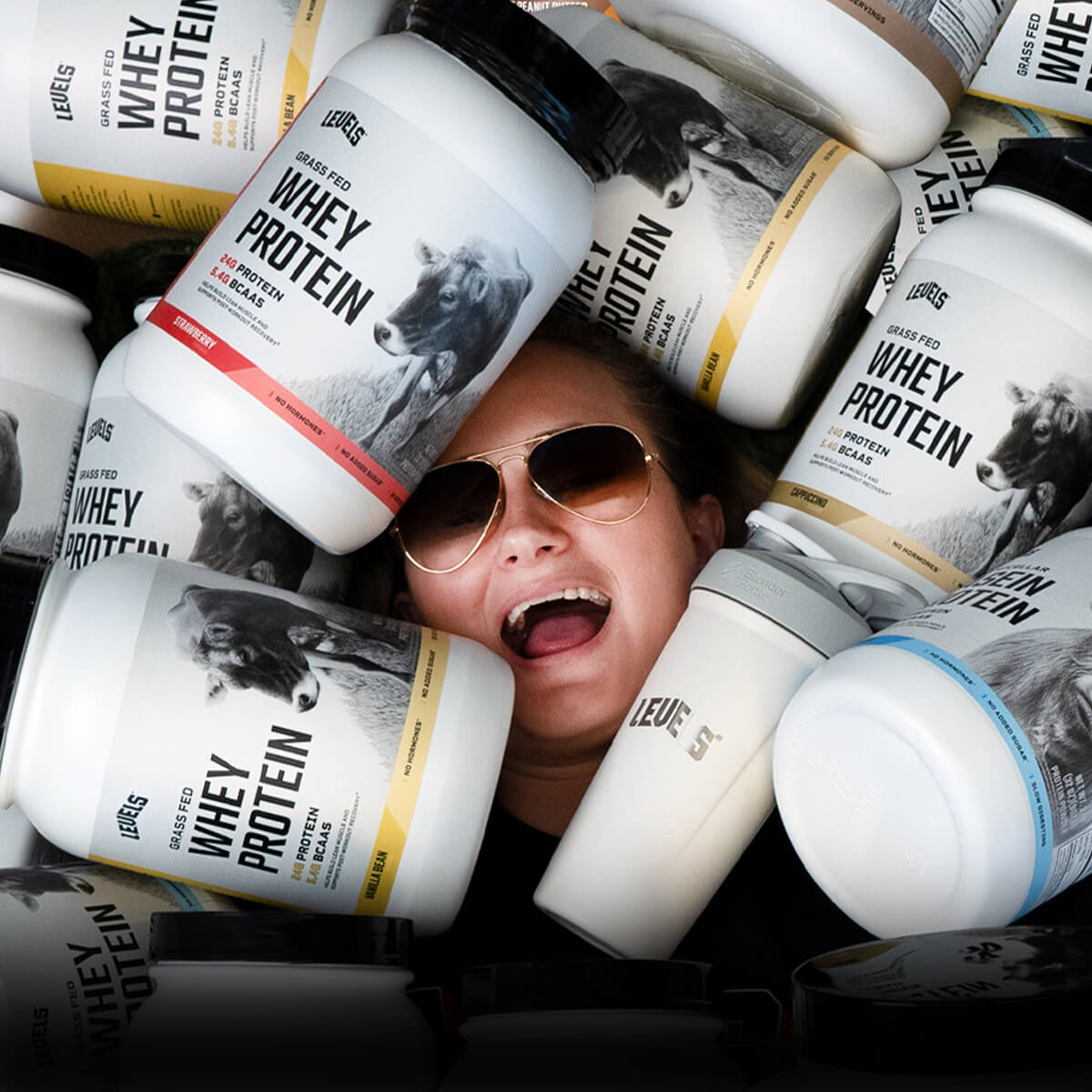Cardio is short for cardiovascular exercise. It includes steady-state aerobic exercise, interval training, and related forms of physical activity.
But how much cardio should you do each day or each week?
The answer depends on your goals. Do you want to use cardio to lose weight, achieve a ripped physique, or build a fitness foundation?
In this article, we dive deep into the science of cardio and its numerous benefits, plus practical examples you can use immediately for fat loss, mass gain, or general fitness.
8 Scientific Benefits of Cardio
1. Faster, Easier Weight Loss
Weight loss or fat loss is one of the more obvious benefits associated with performing cardio.
If you want to see your abs, cardio by itself won’t get you there. However, combined with a sensible diet, aerobic exercise or interval training can accelerate and improve your fat loss results[*][*][*].
In other words, combining cardio and diet works better than diet alone for fat loss.
And not only that, but cardio paired with a weight loss diet can also help reduce dangerous visceral adipose tissue (VAT) or belly fat, more effectively than diet-only[*].
2. Increases Fat Oxidation (Permanently)
Fat oxidation is the scientific name for fat-burning. Basically, fat oxidation means using fat for fuel.
And the more fit you become by performing cardio, the better your body gets at burning fat[*].
Put differently, the longer you stay on a cardio program, the more fat you can burn during cardio and at rest[*][*][*].
Therefore, along with short-term weight loss benefits, including cardio in your fitness program pays long-term dividends for staying lean.
And not only that, but increased fat oxidation from cardio is also fantastic for your health: studies show that obese people and people with diabetes sometimes have trouble burning fat, but cardio can help correct their metabolic issues[*][*].
Or, if you’re currently healthy, increasing fat oxidation by performing cardio also makes your cells more resilient and lowers your risk of type 2 diabetes and other chronic diseases[*].
3. May Preserve Muscle Mass
Research suggests that if you perform cardio at the correct intensity and you’ve dialed in your dietary approach, you may preserve more muscle during fat loss.
For example, according to findings from a peer-reviewed paper published in Frontiers in Physiology in 2017, aerobic exercise plus diet preserved lean body mass 28% better than diet alone[*].
4. Improves Aerobic Fitness
Cardio, especially steady-state cardio, is the best way to increase your aerobic fitness.
Your aerobic or fat-burning energy system is the main contributor after about 3 minutes of physical activity, and it can sustain energy production for up to 120 hours of continuous physical activity[*].
But if you’re not a marathoner or triathlete, does aerobic fitness still matter? The answer is yes.
Firstly, many of the other cardio benefits (such as weight loss, increased fat oxidation, and better heart health) stem directly from aerobic fitness improvements.
And additionally, aerobic fitness can also help athletes like soccer players, basketball players, soccer players, wrestlers, or fighters “gas out” less often and outperform their opponents[*][*][*].
5. More Powerful Muscles
If you want to build strength and power, you should spend most of your training time on exercise that stimulates type 2 muscle fibers — such as heavy, explosive lifting and plyometric movements.
However, your type 1 muscle fibers and aerobic energy system also contribute to force production — even during short-burst “anaerobic” activities lasting 10 seconds or less[*][*].
And peer-reviewed research confirms cardio can enhance force production in individuals ranging from young to old, men and women, elite track athletes, and combat sports athletes[*][*][*][*][*].
Therefore, even if you’re a strength-and-power athlete or someone who values explosiveness, you shouldn’t neglect cardio as one part of your regimen.
Additionally, HIIT and other forms of interval exercise are fantastic for increasing force production and recovery from explosive effort in concert with your overall fitness[*].
6. Speeds Exercise Recovery
As any experienced athlete or gym rat will tell you, recovery matters. The better your recovery, the harder and more frequently you can train, and the better your overall fitness results become.
Diet, rest, and stress management are the three most significant factors in your exercise recovery strategy.
However, cardio — especially low-intensity cardio — can also speed your recovery.
First of all, cardio can act as a form of “active recovery” to increase blood flow to the muscles you’ve exercised recently[*].
And it also helps your nervous system relax by increasing parasympathetic activity, which improves your ability to rest and recover[*][*][*].
Finally, cardio also helps lower cortisol levels by converting cortisol to its inactive form, cortisone, which in turn helps prevent overtraining and decreases feelings of stress[*][*].
7. Enhances Heart Health
As you might guess from the name, cardiovascular exercise is beneficial for your heart health.
The positive cardiac effects come from increased relaxation, healthier heart rhythms, heightened insulin sensitivity, and reduced inflammation[*][*].
Regular cardio may help you live longer by reducing your risk of heart attacks, but the changes aren’t instantaneous. Some published data suggest any heart health benefits occur only after about 3 months of consistent aerobic exercise[*].
8. Boosts Brain Health
Nearly any form of exercise is fantastic for your brain, but cardio offers a number of remarkable brain health benefits:
- Better mood (think “runner’s high”)[*]
- Antidepressant-like effects[*]
- Increased neurotransmitter levels[*]
- Heightened brain plasticity (making learning new tasks or information easier)[*]
Researchers chalk these striking effects up to post-exercise increases in compounds like endorphins and endocannabinoids, as well as decreases in cellular stress and inflammation[*][*][*][*].
The Truth About Different Types of Cardio (HIIT vs. Steady State)

Now that you understand the benefits of cardio, let’s compare the pros and cons of the two most common cardio approaches.
Interval training is a form of exercise that pairs higher-intensity “work periods” with lower-intensity rest or recovery periods. Popular examples include running or sprinting combined with walking, or a combination of cycling fast and slow.
And high-intensity interval training (HIIT) is the best-known form of interval training, but you can also utilize lower-intensity work periods (low-intensity interval training or LIIT).
Steady-state cardio is the simplest, most basic form of cardio. Unlike interval training, during steady-state cardio, you maintain the same pace throughout your session.
For steady-state cardio, people often choose walking, running, or cycling. However, you can use any activity as long as you can sustain it for 20-60+ minutes.
And the truth is, there’s no clear winner between intervals or steady-state. They’re simply different, with different pros and cons.
The biggest difference is that HIIT targets entirely different energy systems than steady-state aerobic exercise, making it more suitable for improving short-burst fitness qualities as opposed to aerobic endurance[*].
And some research suggests that HIIT may be slightly more time-efficient, but perhaps not quite as much as you’ve heard.
For example, a 2019 meta-analysis suggested HIIT saves about 9.7 minutes per session on average for overweight and obese adults[*]
In contrast, a separate 2017 meta-analysis found that HIIT may not be more time-efficient for calories burned, and that spending more time with low-intensity steady-state cardio could be the best strategy for fat loss[*].
What About EPOC?
EPOC (excess post-exercise oxygen consumption), also called “afterburn,” is a measure of how many calories your body burns after exercise while returning to baseline.
Many people (including plenty of coaches and trainers) believe that heightened calorie-burn from EPOC makes HIIT far more time-efficient than steady-state cardio, but is this belief supported by evidence?
Not exactly. Here’s what the numbers say.
Steady-state cardio raises EPOC by 7% of calories burnt during the session, while HIIT can increase it by about 14%[*].
As a practical example, imagine you perform a cardio session where you burn 500 calories.
According to the 7% figure, if it was a steady-state cardio session, your body will burn an additional 35 calories afterward[*].
And according to the 14% figure, if it was HIIT, you’d burn double that — 70 calories after you finish training[*].
As you can see, the added EPOC calorie-burn from HIIT isn’t going to make or break your results, nor will it save you a massive amount of time.
Also keep in mind steady-state cardio is easier and results in more calorie-burn from fat (due to heightened fat oxidation) as opposed to carbs[*].
We aren’t saying HIIT is inferior, but it is slightly overhyped. But here’s how you can decide: try both methods and stick with whatever you enjoy most — just remember to ignore those outrageous claims that 4 minutes of HIIT is as effective as 90 minutes of steady-state!
How Much Cardio Is Necessary For Fat Loss and Other Goals?
At Levels, we recommend you get at least 5 total weekly hours of combined physical activity, regardless of your goal.
People sometimes focus on a single form of exercise for their goal — like weight training for muscle gain, or cardio for fat loss.
However, you’re better off focusing on several different types of training, not just one. As we’ve already discussed, research shows that combining various forms of exercise works better for all goals, including mass gain[*].
Additionally, at Levels, we’ve found that hitting the 5-hour threshold for weekly exercise is relatively easy, but results in dramatically better body composition and performance compared to less activity per week.
Here’s what to count towards your total:
- Weight training or other forms of resistance training
- Any type of cardio you perform (steady-state, intervals, sprints, etc.)
- Going for walks
- Manual labor, yard work, or any other sustained physical activity (even you’re not doing it for exercise purposes)
Simply total up your weekly activity in your exercise log, on a post-it-note, on a whiteboard, or wherever you prefer, and aim for 5 hours. If you can do more, great, but try to get at least 5 hours consistently each week.
On the other hand, you wouldn’t track any time spent on yoga, stretching exercises, mobility work, or sauna visits, for example. Those activities are still fantastic for your health, but they aren’t vigorous enough to count towards your weekly total.
Likewise, don’t count time spent walking to your car, taking the stairs instead of the elevator, or grocery-shopping. Being as active as possible is far better than being sedentary, but it’s not the same thing as exercising.
And now that we’ve established general best practices around cardio and activity volume, here’s what research and experience say about the proper amount of cardio for specific goals.
Cardio For Fat Loss
Remember, cardio isn’t mandatory for fat loss or weight loss, but it increases your fat-burning efficiency and enhances your results[*][*][*].
Fat oxidation may increase when you spend longer than 20 minutes exercising, so for best results, be sure to schedule cardio sessions of 20-60 minutes if your goal is fat loss[*].
Also, fasting or restricting carbs prior to cardio increases the rate of fat oxidation[*]. Therefore, consider an approach like intermittent fasting or cyclical keto if you want to maximize fat-burning — or just perform fasted cardio before breakfast.
The timing of your session also makes a difference. One study showed a full 24-hour increase in fat oxidation participants performed fasted cardio before breakfast[*].
Lastly, remember how we suggested a minimum of 5 hours of activity per week?
If you want to lose fat as fast as possible, you could potentially use extremely high-volume cardio to enhance your rate of fat loss.
For example, if you’re on the ketogenic diet, you may be able to burn over 1.5 grams of fat per minute during cardio, or 90 grams of stored fat per hour[*].
Translation: with the correct diet, for every 5 hours of cardio, you may be able to shed an additional pound of stored body fat.

Feel free to choose accordingly if you’re ever in a fat loss contest for money. Otherwise, though, stick with the slow-and-steady route for your health and wellbeing.
Want to learn how fasting can maximize fat-burning and other health benefits of cardio? Don’t miss Fasted Cardio: Is It the Best Cardio to Burn Fat?
Cardio For Lean Bulking
Cardio is an essential component of a lean bulking regimen. It speeds your recovery, enhances fat oxidation, and keeps fat gain to a minimum.
Similar to cardio for fat loss, the most effective way to perform your cardio for lean bulking is during a fast or while carb-restricted, in blocks of 20-60 minutes.
But if you’re pressed for time, you can also perform cardio right after you lift weights.
Here’s why you shouldn’t do cardio before weights if you want to add muscle: your strength levels may go down after cardio, which could interfere with your performance (and, as a result, diminish your bulking progress)[*].
On the other hand, the inverse is also true: if you’re an athlete looking to get more aerobically fit, you should perform cardio before weights — or ideally, schedule them separately[*].

The type of cardio you choose for lean bulking is up to personal preference, but keep in mind that high-effort exercise like HIIT and sprinting could potentially slow your recovery, hampering your bulking efforts.
For more tips on adding muscle with minimal fat gain, see Clean Bulking: 13 Diet and Training Tips to Gain Muscle, Not Fat.
Cardio for Health and Fitness Goals
Do your goals center more on health and fitness as opposed to losing fat or gaining muscle?
If so, cardio should still be a central focus of your training program.
Here’s what each type of cardio contributes, health-and-fitness-wise:
- Walking for better recovery and general health and wellness
- Low-intensity, steady-state cardio or low-intensity intervals for aerobic fitness
- High-intensity interval training for higher power output in the 30-120 second range[*]
- Repeated short sprints (5-10 seconds) with walking or full rest periods between to build power and explosiveness[*]
However, you can’t develop all of these fitness qualities at once. Therefore, for peak fitness, the most efficient approach is to periodize, or divide your training into different phases where you focus on developing each fitness quality one-by-one.
In other words, if you want to get as fit as possible, focus primarily on one training style for 4-8 weeks or longer before shifting your focus to another one.
But if your main goal is general health, you can mix and match based on preference, and change up your approach as often as you like. In fact, you should experiment to discover what you prefer.
Not sure where to begin? We recommend a blend of weight training, walking, and aerobic exercise to hit your 5-hour weekly activity target.
And you can always add some sprints, HIIT, or other intervals in the future to keep things interesting.
Conclusion: How to Make Cardio Work for You
Whether your current goal is fat loss, mass gain, or general health and fitness, skipping cardio is a mistake.
However, unless your ambition is to run a marathon or compete in a triathlon, there's no need to prioritize cardiovascular exercise over other forms of training, either.
Particularly for fat loss, extra cardio can speed up your results, but it’s still no substitute for a well-thought-out nutrition plan.
Regardless of your goal, we recommend that you strive for at least 5 hours of total weekly activity, coming from a blend of cardio, walking, weight training, and any other sustained physical tasks you happen to perform.
Although each type of cardio develops different fitness qualities, they can all help you reach your goals. Therefore, try everything and see what you like, or utilize a blend — the best type of cardio is the one you perform regularly.





